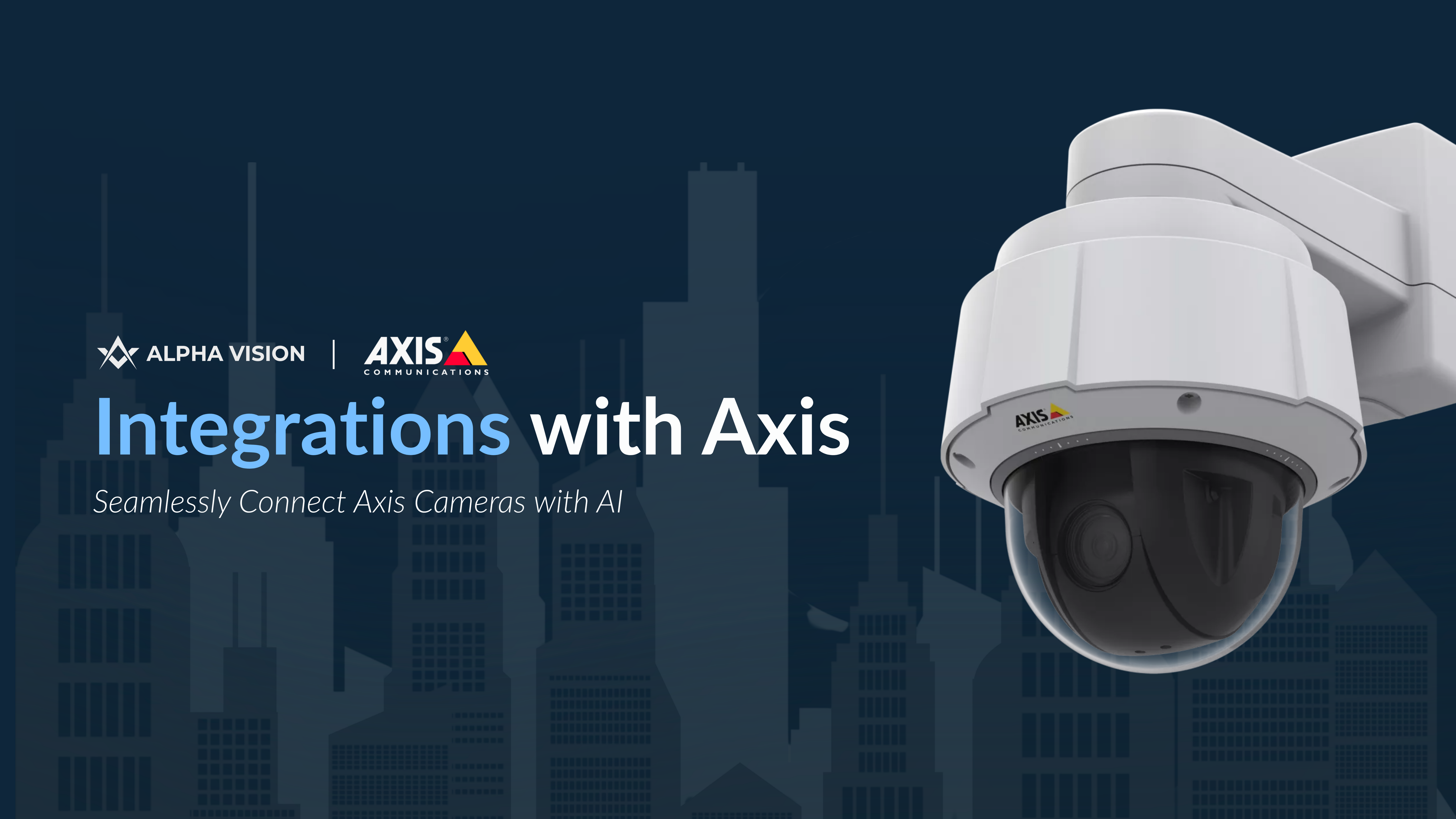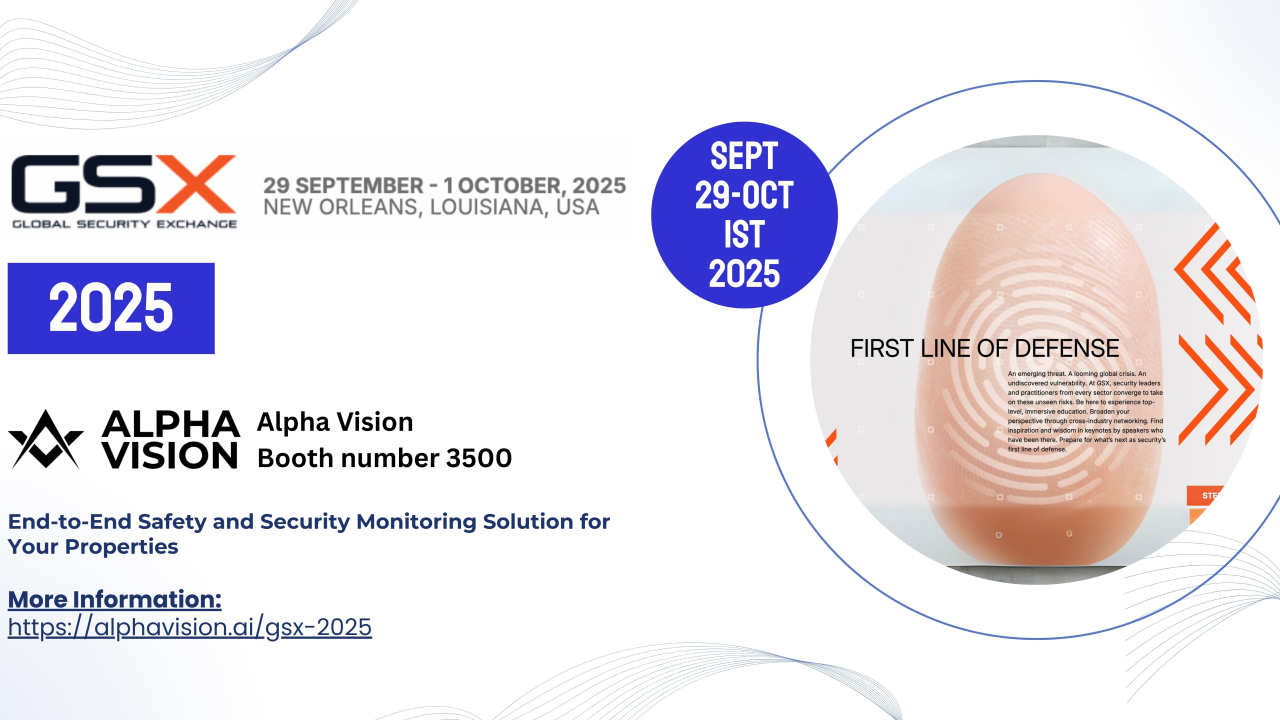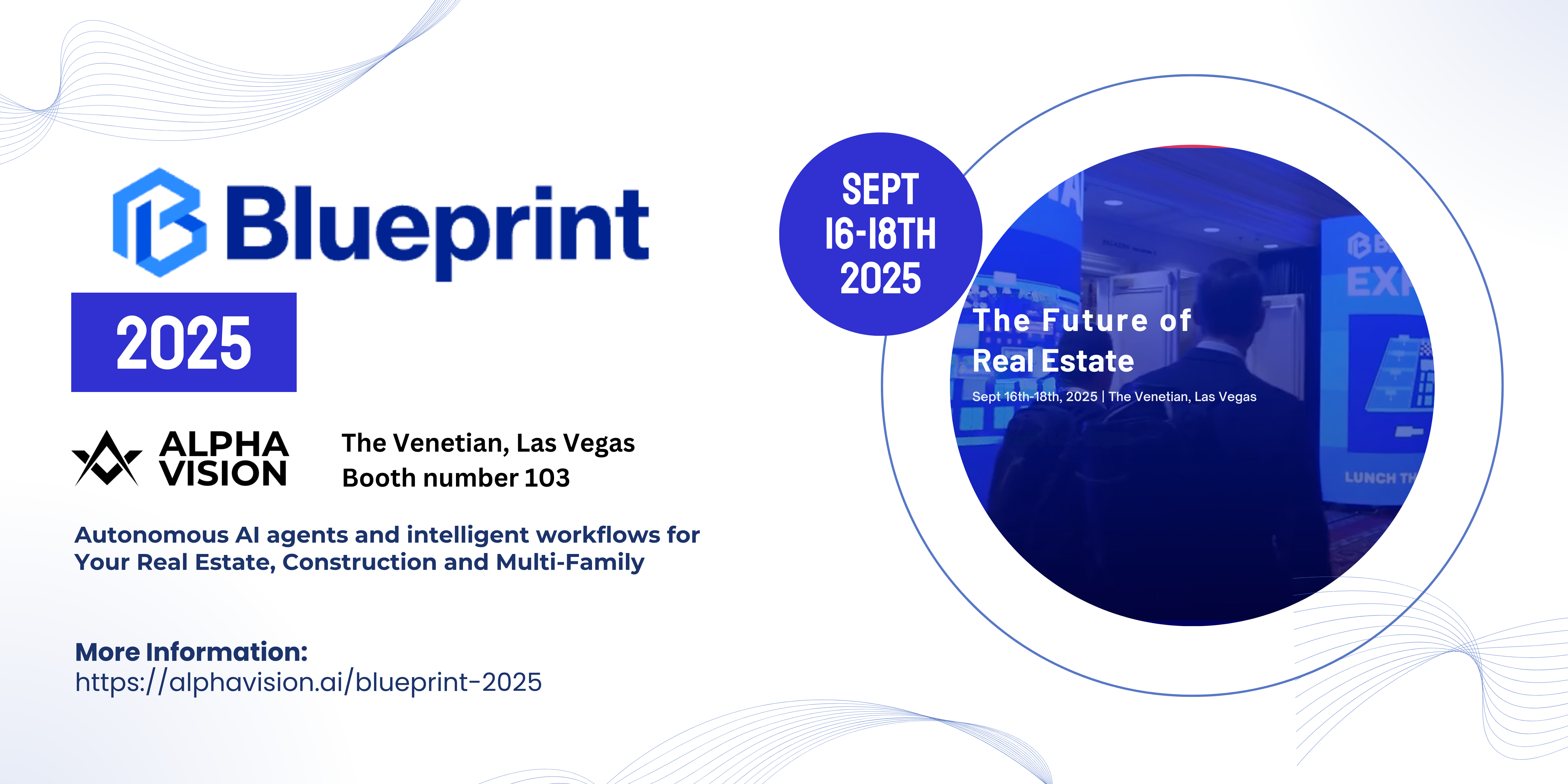Government agencies and security-conscious organizations are increasingly turning to AI-powered video surveillance – but only solutions that meet strict NDAA compliance make the cut. The National Defense Authorization Act prohibits certain Chinese-made components, so NDAA-compliant AI video security systems have become essential for federal, state, and local deployments. These modern platforms pair advanced analytics with robust hardware to help officials actively detect threats, respond in real time, and ensure regulatory compliance. Below we highlight the 8 best NDAA-compliant AI video security solutions recognized in government security. Each solution is approved for use in U.S. government environments and features cutting-edge AI capabilities to protect facilities while meeting strict procurement standards.

1. Alpha Vision + Axis Integration — Government-Grade Cloud AI on Trusted Axis Hardware
Alpha Vision’s Physical AI platform fuses natively with Axis Communications cameras to deliver real-time intelligence, exceptional image quality, and strict compliance in a cloud-managed, plug-and-play package. The result is a proactive security stack that detects, deters, and documents incidents across mission-critical government sites—without NVR/DVR appliances or heavy onsite infrastructure.
Key Features & Benefits
- Precision imaging for evidentiary clarity
Up to 40× optical zoom for long-range identification; 360° panoramic views to remove blind spots; rugged, weatherproof, vandal-resistant builds for dependable indoor/outdoor duty. Axis imaging delivers true-to-life color, superior low-light performance, and adaptive analytics to preserve detail when it matters most.
-
Physical AI that turns cameras into active agents
Magic Search finds footage instantly by object, behavior, or event; Intrusion Alerts trigger in real time; License Plate Recognition (LPR) links vehicles to incidents; AI Inspector automates policy/compliance checks (e.g., unsafe behaviors, PPE). Routine monitoring is automated so teams focus on response.
-
Live intervention and deterrence—built in
Native IP speaker support enables two-way talk-down and broadcast warnings to de-escalate situations before they escalate—ideal for gates, perimeters, and parking assets. Human-in-the-loop workflows combine automated alerts with immediate operator action.
-
Compliance, security, and procurement alignment
Fully NDAA & TAA compliant and approved for U.S. government use, with enterprise-grade security, end-to-end encryption, and robust data-privacy controls—purpose-built for sensitive environments and auditability.
-
Cloud-native operations—no NVR/DVR
Install firmware → connect Axis cameras to Alpha Vision’s cloud → auto-discover → enable AI workflows. The platform stays up to date with the latest AI features and security patches, delivered from the cloud—no appliance sprawl or manual update cycles.
-
Scalable, cost-efficient multi-site expansion
Centralized cloud management standardizes policy, analytics, and user access across locations, reducing hardware, maintenance, and IT overhead while accelerating new-site rollouts. Add cameras, light up AI workflows, and extend coverage in hours—not months.
-
Proactive deterrence across diverse missions
-
Deployed across government/public sector, enterprise campuses, retail, construction, and property management, the integration protects perimeters, lobbies, SCIF-adjacent corridors, parking, and compliance-sensitive zones with the same unified toolset.
-
How It Works (Step-By-Step)
-
Install Axis firmware compatible with Alpha Vision.
-
Connect devices to Alpha Vision’s cloud.
-
Auto-discover cameras.
-
Enable AI workflows (Magic Search, Intrusion Alerts, LPR, AI Inspector).
-
Optionally pair IP speakers for live talk-down. From there, policy updates and new analytics arrive automatically via the cloud.
Why Agencies Choose It First
-
Imaging you can trust for identification and evidence, even in low light.
-
AI that speeds investigations from hours to minutes and catches events as they unfold.
-
Live deterrence to stop incidents before they become reports.
-
NDAA/TAA compliance and enterprise-grade security aligned with public-sector mandates.
-
Cloud simplicity with no NVR/DVR, effortless updates, and rapid scale-out to new facilities.
2. Genetec Security Center – Unified Command Platform
Genetec unifies video, access control, ALPR, and analytics into one enterprise platform for multi-site oversight in government environments.
Key Features
-
Open architecture with broad device/AI ecosystem
-
Centralized monitoring and role-based control
-
Forensic search (objects, motion, attributes)
-
POS/incident data correlation and reporting
Limitations
-
Complex deployment/integration needs
-
Higher licensing/module costs at scale
-
Steeper learning curve for advanced features
-
Many advanced AIs require add-ons
-
Server-heavy core; hybrid/cloud optional
3. Motorola Solutions Avigilon – High-End Cameras & Appearance Search
Avigilon combines premium imaging with AI like Appearance Search and self-learning analytics, widely used in mission-critical sites.
Key Features
-
Appearance/attribute search across cameras
-
Self-learning analytics (loitering, anomalies)
-
High-resolution imaging and resilient storage
-
LPR and tight Motorola ecosystem integrations
Limitations
-
Premium hardware/software pricing
-
Typically on-prem; less cloud-native
-
Professional install/IT effort required
-
Best features tied to own ecosystem
-
Additional analytics licenses add cost
4. Hanwha Vision (Wisenet) – NDAA Cameras with Edge AI
Hanwha’s Wisenet line offers NDAA-compliant cameras with on-camera analytics, deterrence options, and ONVIF interoperability.
Key Features
-
Edge AI for object/classification events
-
Audio/visual deterrence (speakers/strobes)
-
Retail/government dashboards and counts
-
Flexible storage: on-device/NVR/hybrid
Limitations
-
Higher upfront costs vs. some cloud options
-
Edge AI lighter than top cloud-AI suites
-
Accuracy sensitive to placement/coverage
-
Ongoing firmware/VMS maintenance
5. Eagle Eye Networks – Camera-Agnostic Cloud VMS
A pure-cloud VMS that centralizes management across sites with growing AI search and open APIs for integrations.
Key Features
-
Cloud recording and remote access at scale
-
AI smart search and LPR options
-
Open API for POS/sensor integrations
-
Multi-site oversight via single console
Limitations
-
Internet/bandwidth dependency
-
Recurring per-camera subscription costs
-
Requires on-site bridge appliances
-
Potential latency vs. fully on-prem
-
Custom use cases may need API work
6. Rhombus Systems – End-to-End Cloud AI with NDAA Cameras
Rhombus delivers plug-and-play NDAA cameras with built-in AI and a streamlined cloud console for distributed teams.
Key Features
-
Rapid deployment with zero servers
-
People/vehicle/object analytics by default
-
Centralized admin, SSO, audit trails
-
Continuous updates and hardening
Limitations
-
Proprietary cameras (vendor lock-in)
-
Cloud-only; limited offline/air-gap use
-
Ongoing SaaS fees over lifecycle
-
Smaller integration ecosystem vs. legacy VMS
7. Milestone Systems (XProtect) – Open-Platform VMS
A hardware-agnostic VMS foundation that adds AI through a broad marketplace of partner plugins and rule automation.
Key Features
-
Works with most NDAA camera brands
-
Extensive third-party AI integrations
-
Custom rules/alarms and workflows
-
Scales from single site to enterprise
Limitations
-
Requires IT resources/servers to operate
-
No native advanced analytics
-
Costs rise with third-party add-ons
-
Performance varies by camera/integration
-
Privacy/usage policy burden when adding AI
8. Axis Communications (Standalone) – Gold-Standard NDAA Cameras
Axis offers durable, high-fidelity NDAA-compliant cameras, basic analytics, and ACAP apps, often paired with third-party VMS.
Key Features
-
Premium optics and build quality
-
Basic motion/line-cross analytics on-edge
-
ACAP apps for added functions
-
Broad form factors (PTZ, dome, panoramic)
Limitations
-
Limited native AI depth without add-ons
-
Primarily on-prem; not cloud-first
-
Enterprise features require external VMS
-
Higher unit cost; fleet upkeep effort








